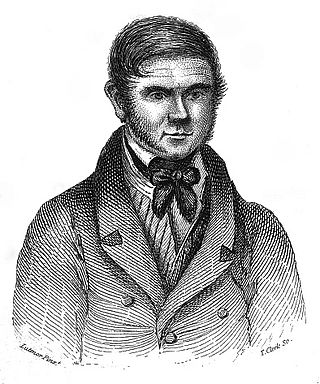
The Burke and Hare murders were a series of sixteen murders committed over a period of about ten months in 1828 in Edinburgh, Scotland. They were undertaken by William Burke and William Hare, who sold the corpses to Robert Knox for dissection at his anatomy lectures.
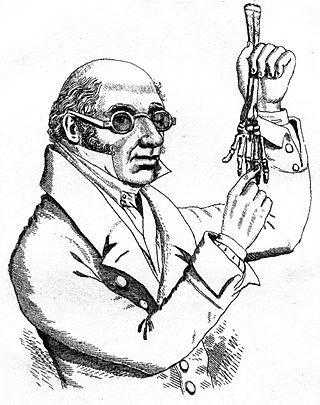
Robert Knox was a Scottish anatomist and ethnologist best known for his involvement in the Burke and Hare murders. Born in Edinburgh, Scotland, Knox eventually partnered with anatomist and former teacher John Barclay and became a lecturer on anatomy in the city, where he introduced the theory of transcendental anatomy. However, Knox's incautious methods of obtaining cadavers for dissection before the passage of the Anatomy Act 1832 and disagreements with professional colleagues ruined his career in Scotland. Following these developments, he moved to London, though this did not revive his career.
"The Body Snatcher" is a short story by the Scottish author Robert Louis Stevenson (1850–1894). First published in The Pall Mall Gazette in December 1884, its characters were based on criminals in the employ of the surgeon Robert Knox (1791–1862) around the time of the notorious Burke and Hare murders in 1828.

Dr. Jekyll and Sister Hyde is a 1971 British horror film directed by Roy Ward Baker based on the 1886 novella Strange Case of Dr Jekyll and Mr Hyde by Robert Louis Stevenson. The film was made by British studio Hammer Film Productions and was their third adaptation of the story after The Ugly Duckling and The Two Faces of Dr. Jekyll. The film is notable for showing Jekyll transform into a female Hyde; it also incorporates into the plot aspects of the historical Jack the Ripper and Burke and Hare cases. The title characters were played by the film's stars, Ralph Bates and Martine Beswick.

The Body Snatcher is a 1945 American horror film directed by Robert Wise, based on the 1884 short story of the same name by Robert Louis Stevenson. Philip MacDonald adapted the story for the screen, and producer Val Lewton, credited as "Carlos Keith", modified MacDonald's screenplay. The film stars Boris Karloff as John Gray, a cab driver who moonlights as a grave robber, and later murderer, to illegally supply Dr. MacFarlane with cadavers for his classes, and makes mention of Burke, Hare, and Dr. Knox, in reference to the West Port murders of 1828. Alongside Karloff and Daniell, the film's cast includes Russell Wade, Edith Atwater, and Bela Lugosi. It was the last film in which both Karloff and Lugosi appeared.

The Blood Beast Terror is a 1968 British horror film directed by Vernon Sewell and starring Peter Cushing, Robert Flemyng and Wanda Ventham. It was released in the UK by Tigon in February 1968, and in the United States by Pacemaker Pictures on a double-bill with Slaughter of the Vampires (1962).
Dee Shipman was a songwriter who worked with Charles Aznavour and Petula Clark. Together with Clark, she wrote the 1990 West End musical Someone Like You.

Ghost Ship is a 1952 British second feature thriller film directed by Vernon Sewell and starring Dermot Walsh and Hazel Court. It was written by Vernon Sewell and Philip Thornton. This was one of four attempts by Vernon Sewell to adapt and film the Pierre Mills and Celia de Vilyars Grand Guignol stage play L'Angoisse.
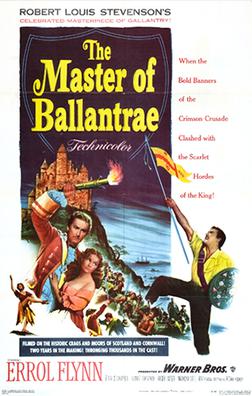
The Master of Ballantrae is a 1953 British Technicolor adventure film starring Errol Flynn and Roger Livesey. It is a loose and highly truncated adaptation of the Robert Louis Stevenson 1889 novel of the same name. In eighteenth century Scotland, two sons of a laird clash over the family estate and a lady. It was the last film directed by William Keighley.

The Informers is a 1963 British crime film directed by Ken Annakin and starring Nigel Patrick, Margaret Whiting, Harry Andrews, Derren Nesbitt and Colin Blakely. It was produced by William MacQuitty, with screenplay by Paul Durst and Alun Falconer from the novel Death of a Snout by Douglas Warner. Cinematography was by Reginald H. Wyer. It was distributed in the UK by The Rank Organisation and the U.S. by Continental Film Distributors.
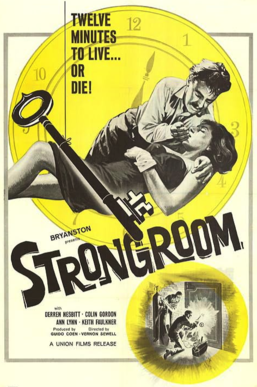
Strongroom is a 1962 British 'B' crime drama film directed by Vernon Sewell and starring Derren Nesbitt, Colin Gordon and Ann Lynn. A group of criminals lock two bank employees in a safe during a robbery.
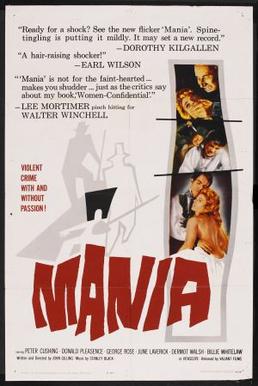
The Flesh and the Fiends is a 1960 British horror film directed by John Gilling and starring Peter Cushing, June Laverick and Donald Pleasence. 19th-century medical doctor Robert Knox purchases human corpses for research from a murderous pair named Burke and Hare. The film is based on the true case of Burke and Hare, who murdered at least 16 people in 1828 Edinburgh and sold their bodies for anatomical research.

Vernon Campbell Sewell was a British film director, writer, producer and, briefly, an actor.

Doctor in Love is a 1960 British comedy film, the fourth of the seven films in the Doctor series, directed by Ralph Thomas and starring James Robertson Justice and Michael Craig. It was the first film in the series not to feature Dirk Bogarde, although he did return for the next film in the series Doctor in Distress. It was loosely based on the 1957 novel of the same title by Richard Gordon.

Burke & Hare is a 2010 British black comedy film, loosely based on the Burke and Hare murders of 1828. Directed by John Landis from an original screenplay by Nick Moorcroft and Piers Ashworth, the film stars Simon Pegg and Andy Serkis as William Burke and William Hare respectively. It was Landis's first feature film release in 12 years, the last being 1998's Susan's Plan. The film was released in the United Kingdom on 29 October 2010.
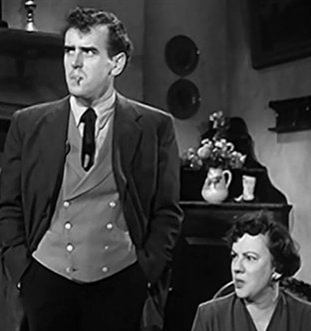
Where There's a Will is a 1955 British comedy film directed by Vernon Sewell and starring Kathleen Harrison, George Cole and Leslie Dwyer. The screenplay was by R. F. Delderfield who adapted one of his own plays.

The Greed of William Hart is a 1948 British horror film directed by Oswald Mitchell and starring Tod Slaughter, Henry Oscar, Aubrey Woods, Patrick Addison, Jenny Lynn, Winifred Melville and Arnold Bell. The film depicts two Edinburgh bodysnatchers closely modelled on the real Burke and Hare. However, neither the real Burke and Hare nor the characters of Moore and Hart in the film, actually did any bodysnatching, but murdered the people whose bodies they sold to Dr Knox.

The Doctor and The Devils is a 1985 British gothic horror film directed by Freddie Francis and starring Timothy Dalton, Jonathan Pryce and Stephen Rea. The script was adapted by Sir Ronald Harwood from an unproduced screenplay by Dylan Thomas. It was produced by Mel Brooks, through his production company Brooksfilms.
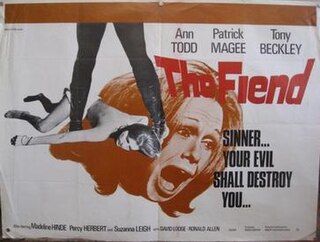
The Fiend is a 1972 British horror film produced and directed by Robert Hartford-Davis and starring Ann Todd, Tony Beckley and Patrick Magee. The film is set against a background of religious fanaticism and, as with other films directed by Hartford-Davis, includes elements of the sexploitation genre of the early 1970s.

The Man in the Back Seat is a 1961 British second feature crime film, directed by Vernon Sewell and starring Derren Nesbitt and Keith Faulkner. The film is based on an Edgar Wallace story.


















